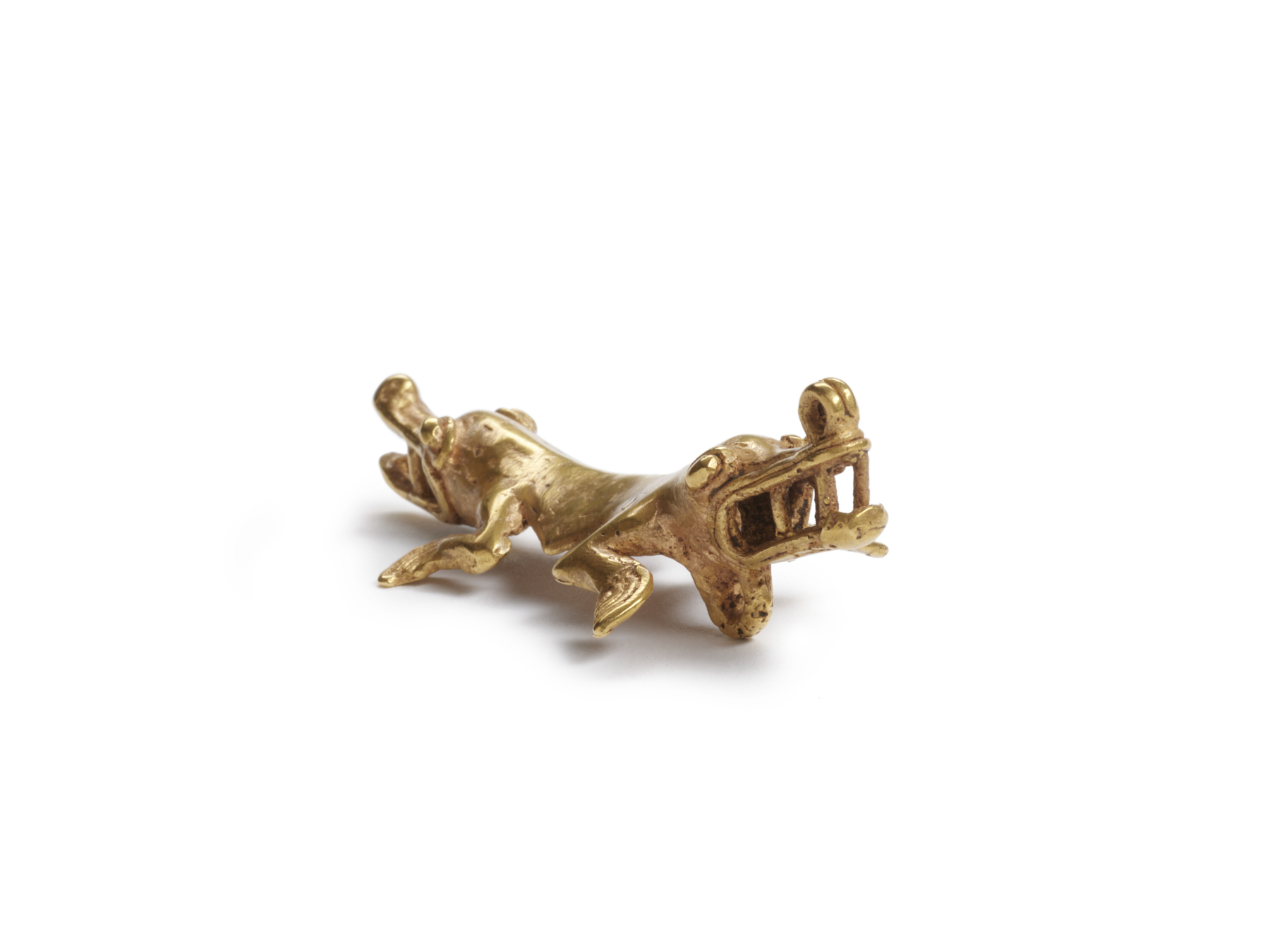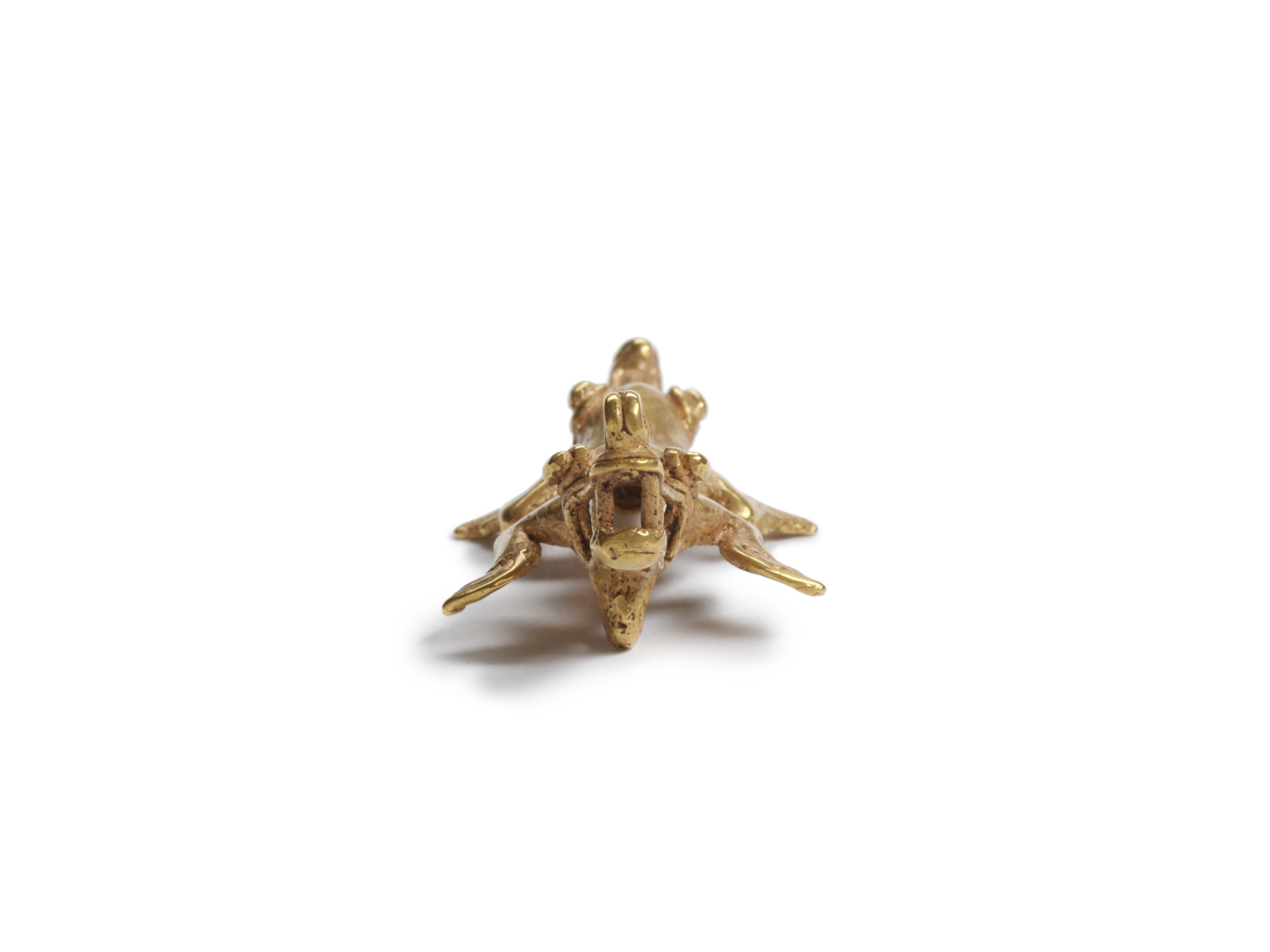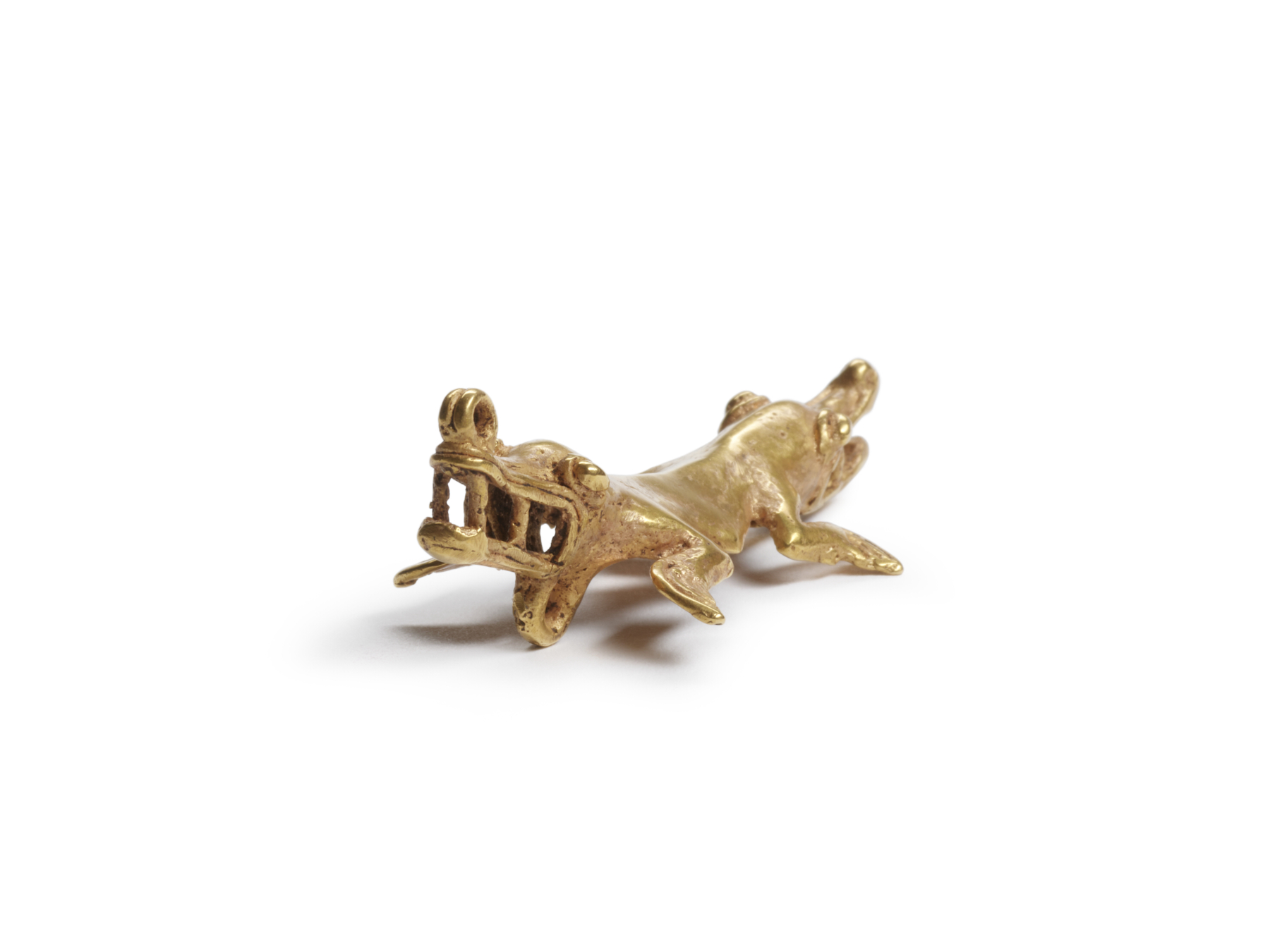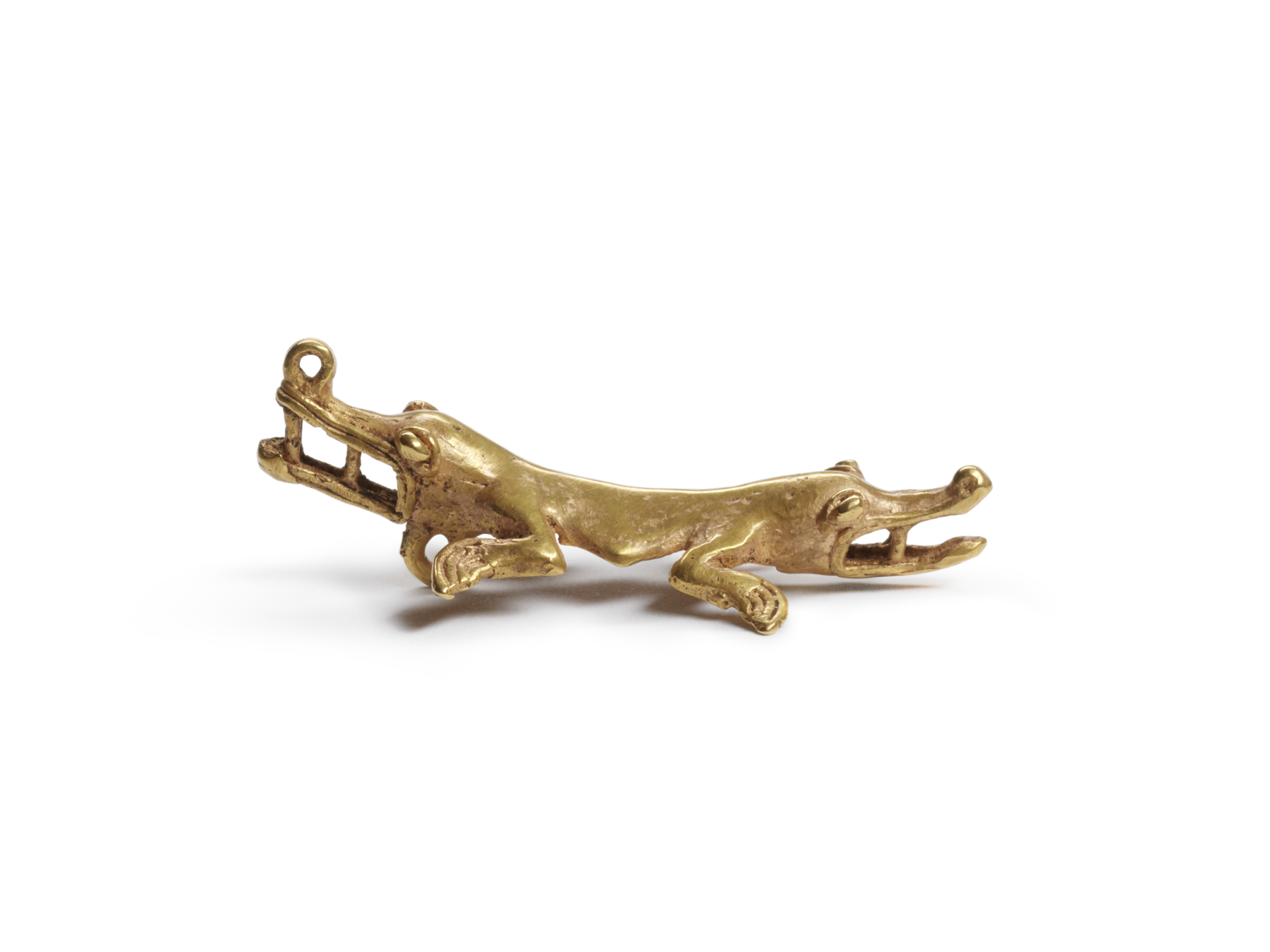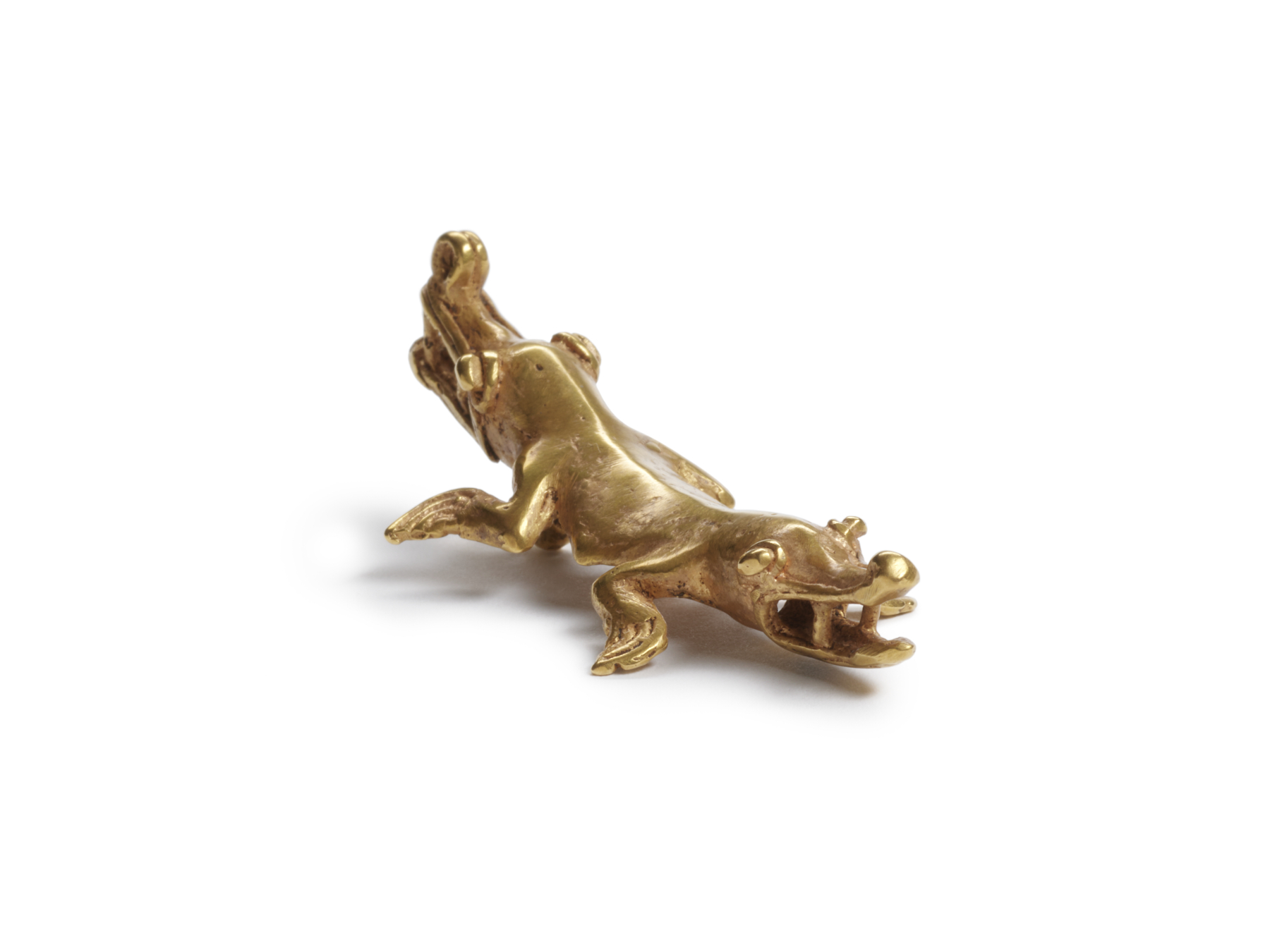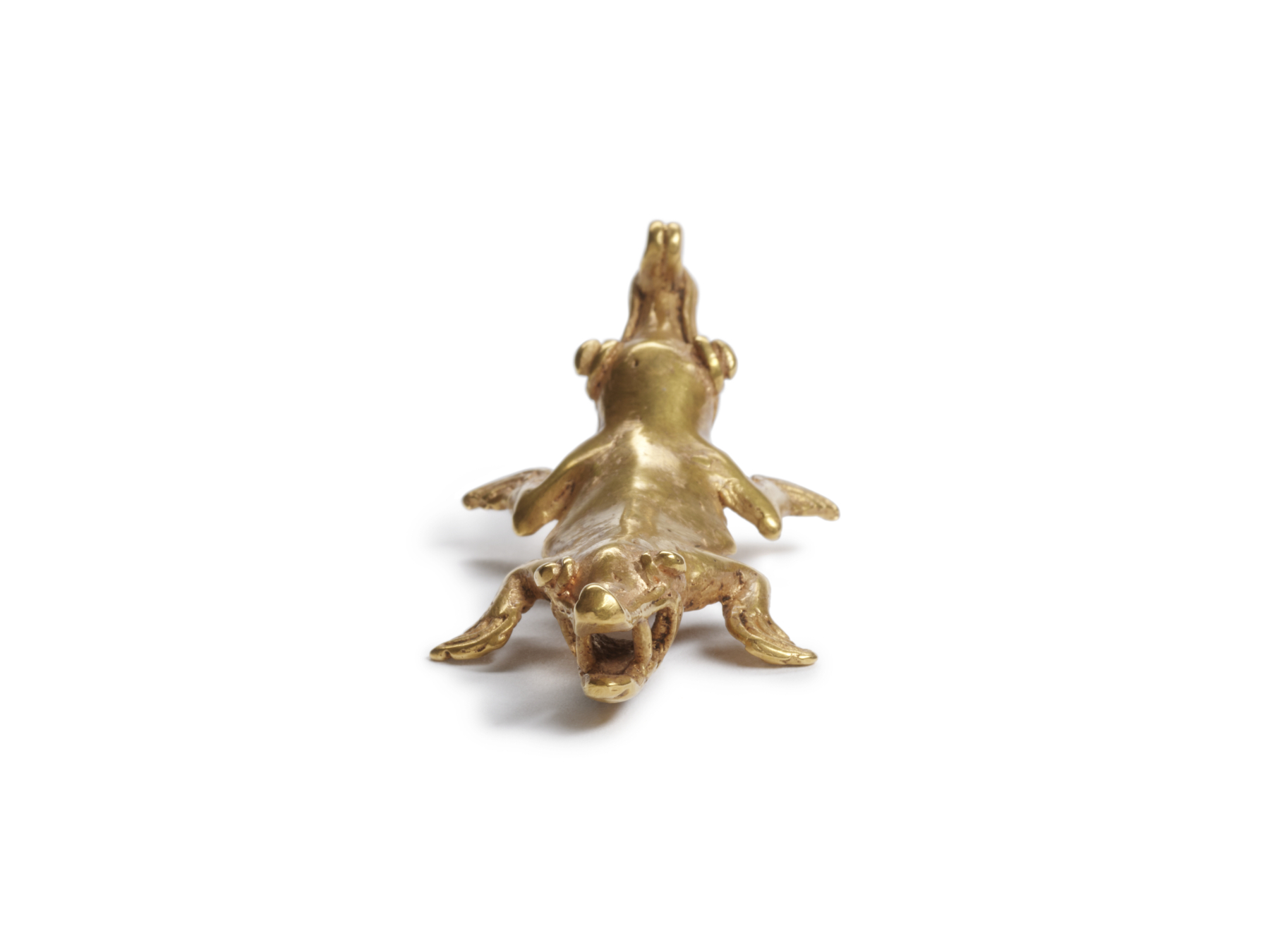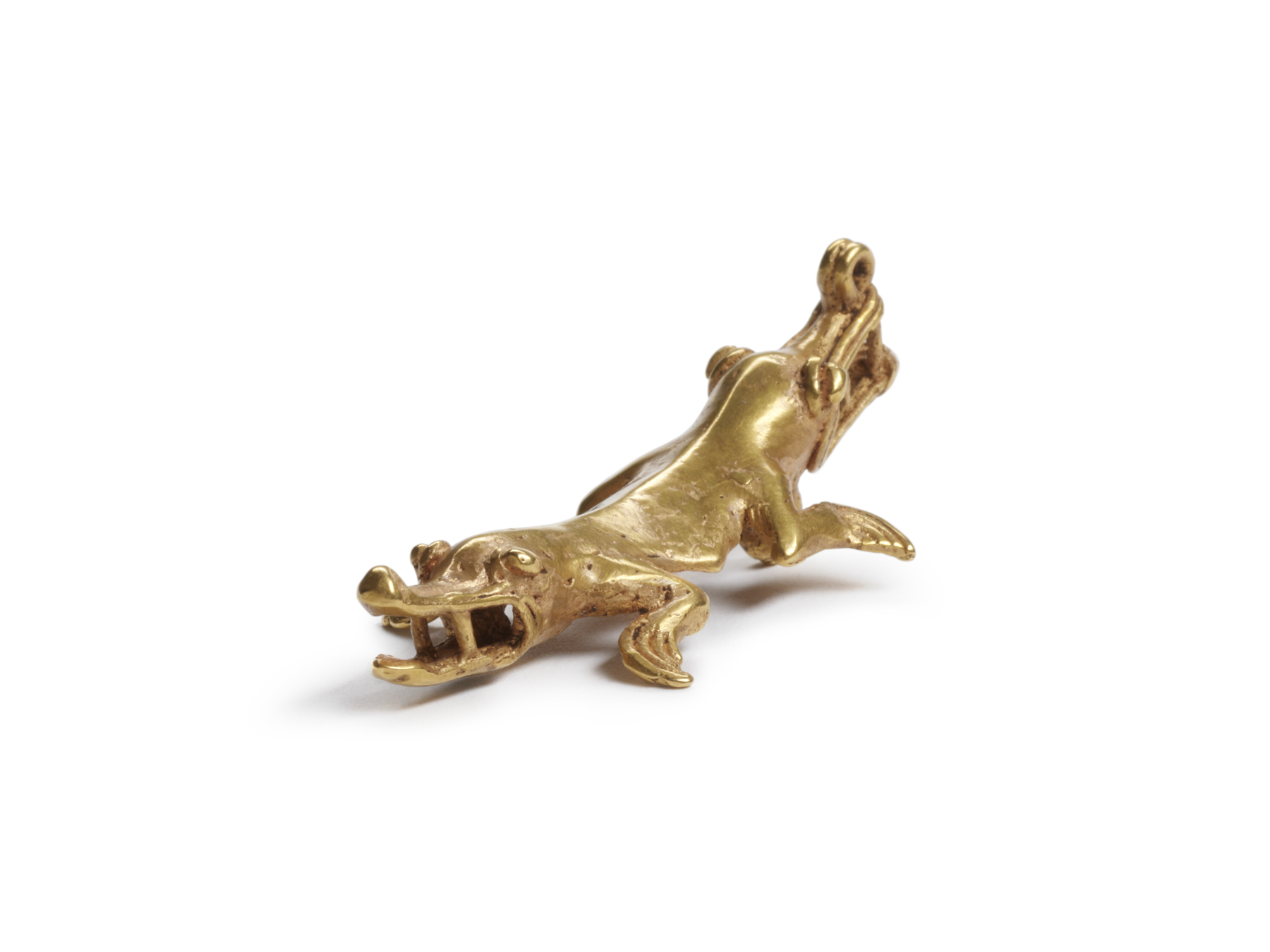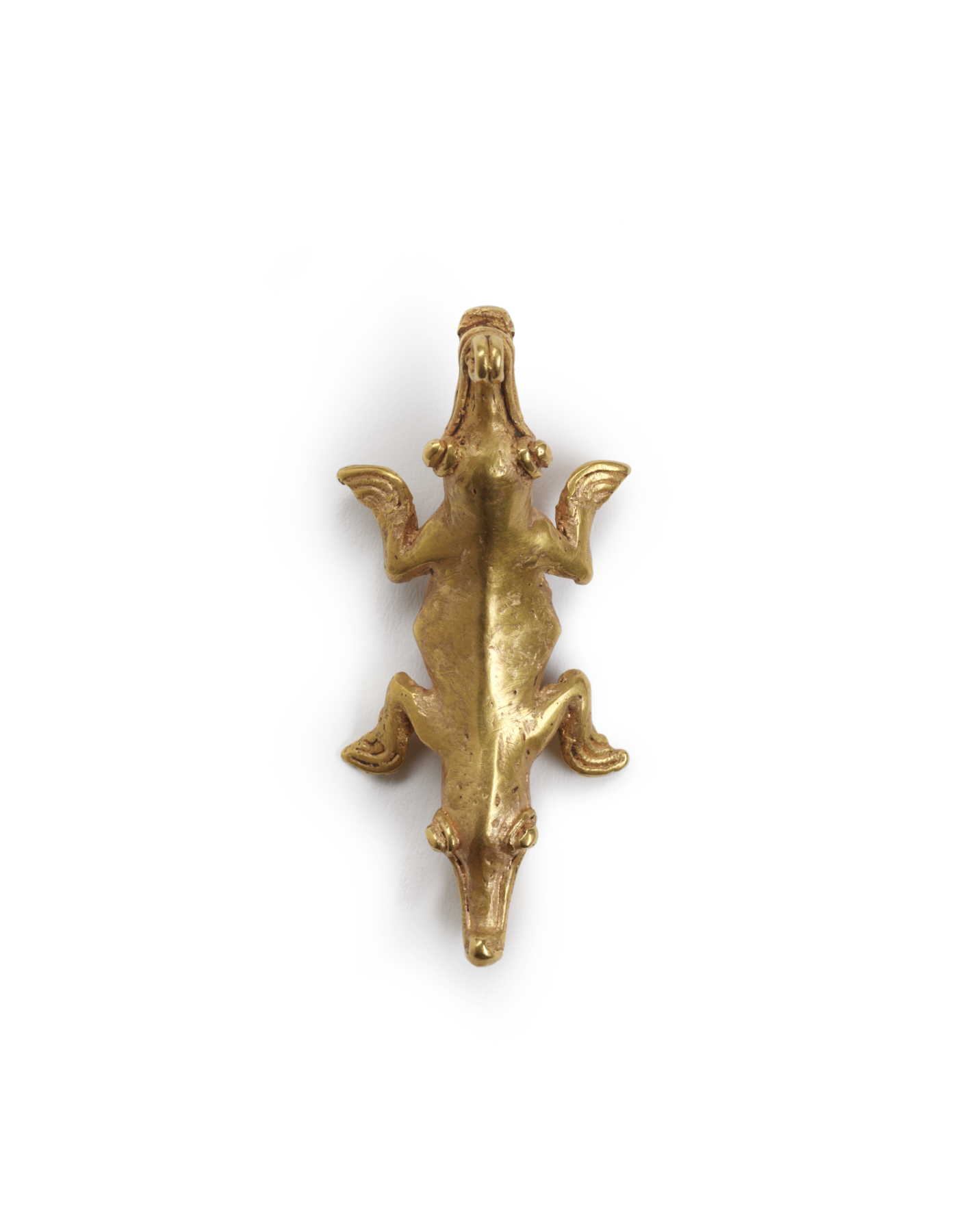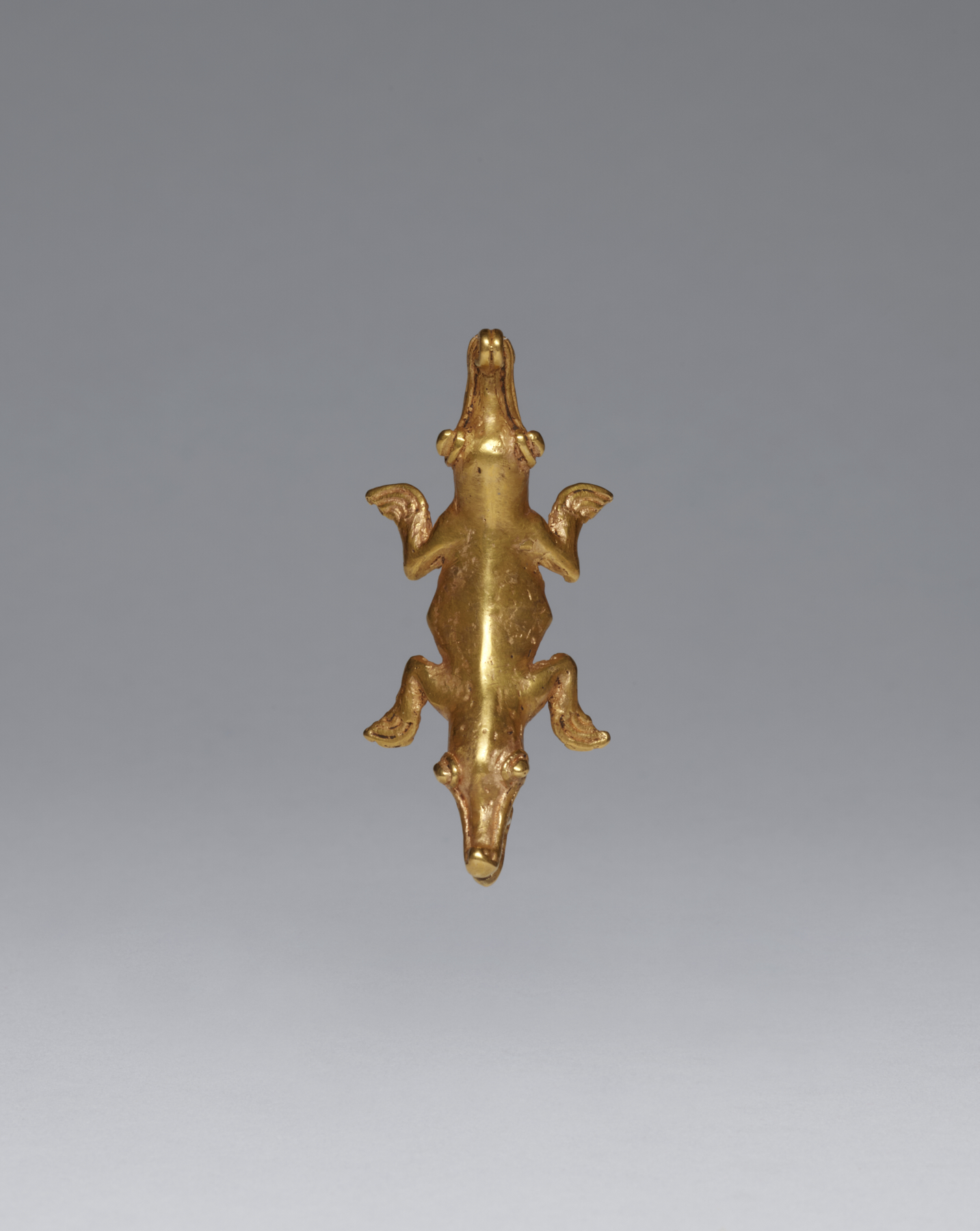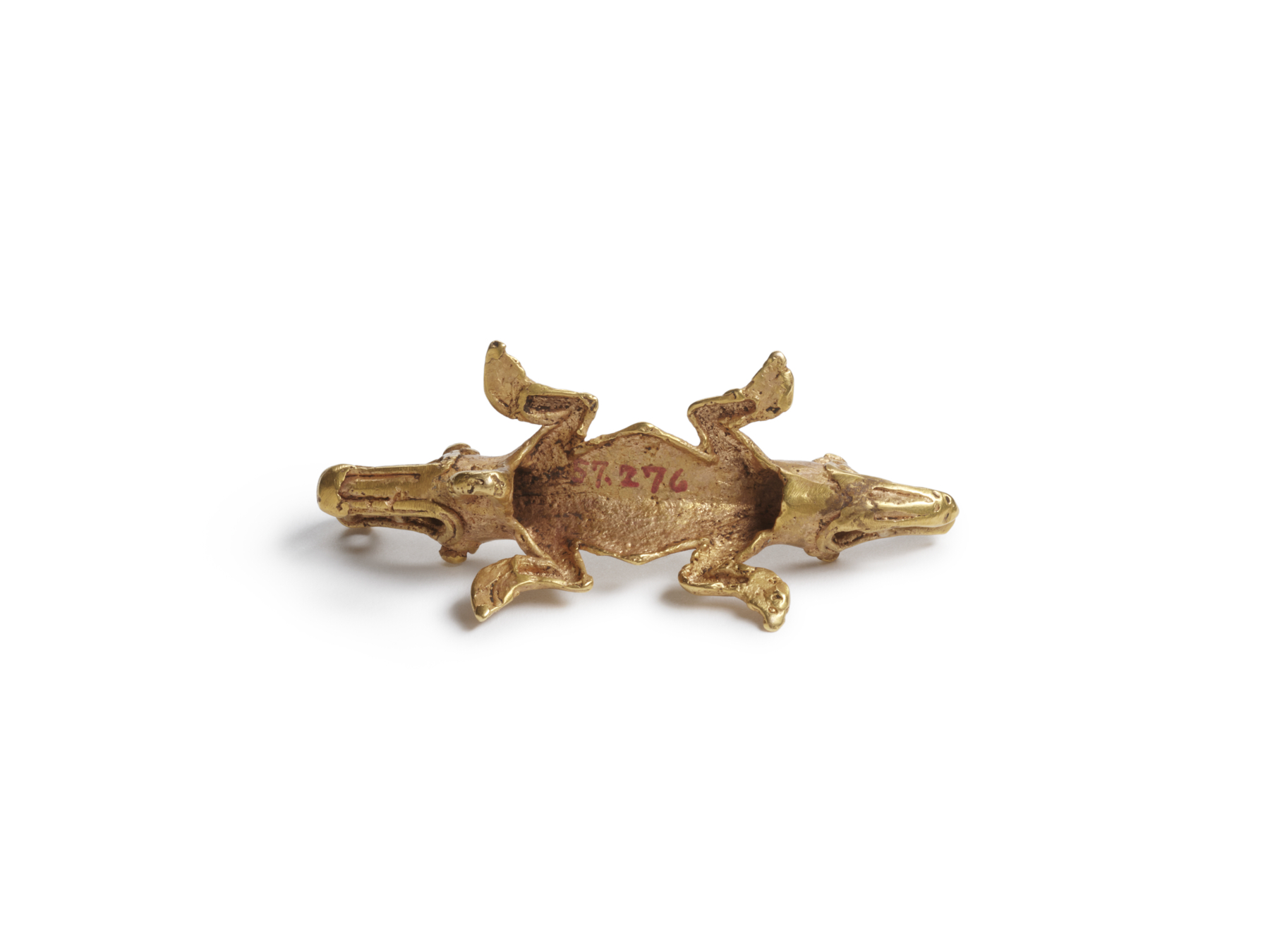Pendant with a Double-Headed Alligator
Pendants were worn by men around the neck on ceremonial occasions. Columbus noted that the inhabitants of Panama who came to greet him wore gold pendants in the shape of eagles.
The animals represented are fierce ones with which a warrior would have wanted to associate- or they cross boundaries of nature (for example, live in land and water) such as alligators- to which supernatural powers were attributed. These animals also frequently have two heads. A loop for suspension is under one of the heads.
Provenance
Provenance (from the French provenir, 'to come from/forth') is the chronology of the ownership, custody, or location of a historical object. Learn more about provenance at the Walters.
[Found at a graveyard between Divalá (a village on the outskirts of settled Panama, thirty miles west of David in the province of Chiriqui) and Costa Rica, Spring 1909]; Tiffany & Co. New York, 1910, by purchase [from "Indians," see December 29, 1910 correspondance from Tiffany & Co. to Henry Walters]; Henry Walters, Baltimore, 1911, by purchase; Walters Art Museum, 1931, by bequest.
Exhibitions
| 1971-1972 | World of Wonder. The Walters Art Gallery, Baltimore. |
Geographies
Panama (Veraguas-Gran Chiriquí) (Place of Origin)
Measurements
H: 15/16 × W: 1 3/16 × L: 2 7/16 in. (2.4 × 3 × 6.2 cm)
Credit Line
Acquired by Henry Walters, 1911
Location in Museum
Charles Street: Second Floor: Latin American Art / Arte Latinoamericano
Accession Number
In libraries, galleries, museums, and archives, an accession number is a unique identifier assigned to each object in the collection.
In libraries, galleries, museums, and archives, an accession number is a unique identifier assigned to each object in the collection.
57.276

